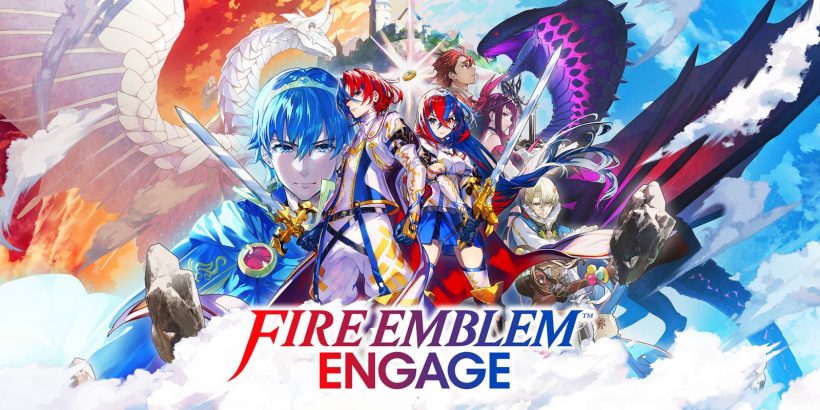It’s easy to look at Fire Emblem Engage and see nothing but fan-service. After the success of Fire Emblem Heroes, a gacha game where beloved FE characters don swimwear and easter bunny bodysuits each season, the state of Engage is plain to understand. The focus here is on the protagonists of previous titles returning to the forefront to fight alongside a new crop of colourful characters, all of whom seem to have sprung straight out of an anime. For some long-time fans, this approach might be leaning too much in an undesirable direction.
For others, simply seeing old favourites back in a fully-fledged Fire Emblem game is enough to win them over. And ultimately, Engage is much more than fan-service – it’s a celebration of one of Nintendo’s biggest franchises, blending the old and new in an excellent, content-rich package.
If great Fire Emblem gameplay is what you’re after, Engage is a triumph. It brings back the weapon triangle system of old, adds in some surprisingly deep power-ups tied to past heroes, and places it all on a series of intelligent maps designed to challenge and excite.
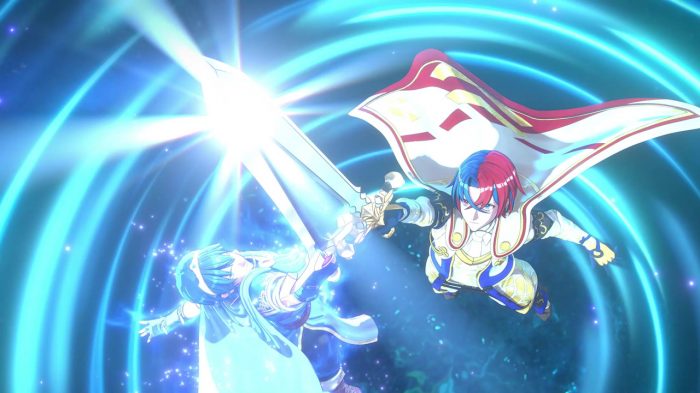
Many of the tried and true gameplay systems show up once again, like the advanced classes feature which makes levelling up your units a treat. You can keep it simple by turning your archer into a sniper, or go crazy and give your thief a sweet wolf to ride into battle. This adds a lot of replayability, and there’s no penalty for upgrading as soon as you’re able – past games sometimes required you to wait if you wanted optimal stat gains, but Engage is less concerned with prohibiting your choices.
Engage hands you fresh units almost every mission, sometimes two or three at once. It’s hard to get to know them all in one playthrough but, once again, there’s a lot of replayability here. You might find value in different units each time you play, and none of their classes overlap too much, meaning they don’t tend to feel irrelevant right out of the gate.
The characters themselves are hit-and-miss though. This mainly comes down to the quality of the writing, which often fails to flesh out new recruits as well as it could. The highlights are the royals, who each bring some insight into the daunting task of ruling a kingdom. You’re essentially teaming up with the next generation of this world’s leaders, and it’s nice seeing them grow alongside you. Diamant is terrified of losing his father but comes to understand what it means to follow in his footsteps. Ivy starts as a foe, but joins your cause upon seeing the damage being done to her homeland.
And of course, you’ve got the heroes of old, past protagonists in spirit form equipped with powerful abilities once you “engage” in battle. There are almost too many of them to keep up with, and they all come with a huge host of skills you can inherit with each individual unit. Some of these heroes play a more supportive role; some let you teleport anywhere on the map and drop a nuke on your enemies. When your whole squad can engage, it’s almost impossible to manage the sheer amount of options available to you. And the impressive thing is that despite having such a large array of superpowers at your disposal, missions rarely feel like a cakewalk.
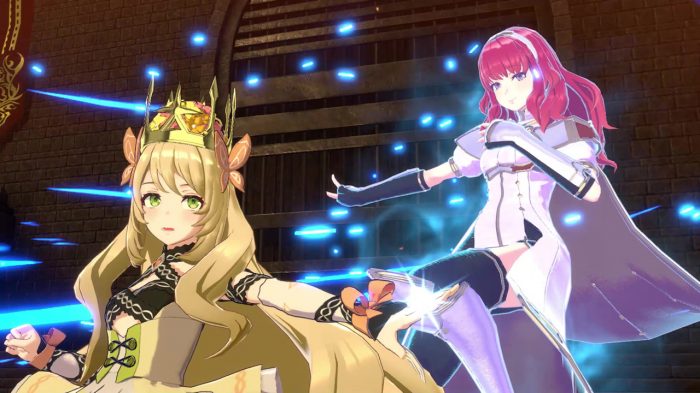
Playing on Classic is the way to go (though a more accessible casual option is available if you prefer). Knowing that your units can die in battle adds weight to every move you make, even on Normal difficulty. Strategy games are at their best when there are real consequences to your decisions.
This is somewhat diminished by the “Draconic Time Crystal”, an item that lets you rewind time and salvage errors. You get a generous amount of uses out of this tool, and I personally think it cheapens Classic mode. Permadeath makes you care about losing your characters, and nullifying that by rewinding time rather removes the point. Luckily, you can just ignore it – though you might end up time-travelling when an enemy lands a 2% chance critical hit on your star soldier.
Engage will test you, but it isn’t punishing in the way other games can be. You can clearly see which enemies are in range to attack you no matter where you go, so you won’t be hit by cheap surprise attacks. Battles aren’t an overwhelming mess of units – each enemy and their weapon type is clear, and it’s easy to learn their weaknesses.
Chapters 1 to 11 make for a great bunch of battles, but things slow down after that. It does pick back up again, but this is a long game and not all of it maintains the same level of enjoyment. It’s at this point that the regular dialogue between chapters really starts to get grating. Mercifully, there is the option to skip through text if you feel like it. Usually, though, the bits of banter before missions are brief enough to keep you engaged.
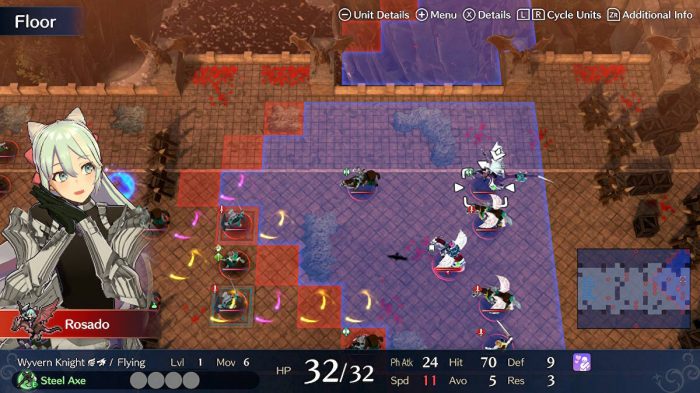
Late-game missions are absolute gauntlets. Reinforcements pour in each turn in borderline-obnoxious fashion, stretching battles out to over an hour of constant fights. With animations enabled (and the animations are pretty cool), things start to get repetitive fast in these seemingly-endless hordes. You could finish some indie games in the time it takes to complete one late-game Engage mission. Whether that’s a good thing or not depends on what kind of a player you are. If you’re looking for a game to quickly hop onto for a bit of fun, you’re probably not going to find it here.
The story is typical JRPG-fare. You are the chosen one, and you must defeat a great evil to save the land. Compared to the political scheming and school setting of Three Houses, Engage is more of a standard anime adventure. That’s not to say it isn’t worth your time though. While it does get ridiculously cheesy at times, it’s still enjoyable.
Certain moments hit harder when they happen in battle. Seeing Diamant’s reaction to a certain fight in Chapter 10 was one of the highlights of my campaign, and I urge everyone to slot him on your team when you reach it. When Engage’s story and dialogue hits, it really hits, which makes up for the relatively predictable nature of the overall narrative.
The music is pretty great too. Tear Streaked is by far one of Fire Emblem’s best tracks. Hearing it in battle makes each of your actions feel that much more significant. The signature theme merging in and out of the more upbeat battle music never fails to spur you on.
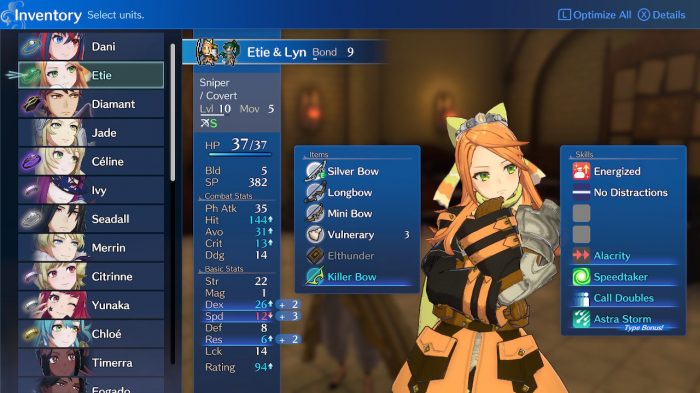
Music aside, Engage is a mix of emotions. On one hand, certain scenes can be endearing or dramatic; generally, most are awkward and stationary. Pre-battle dialogue plays out between major characters standing around on empty battlefields. We’re supposed to believe that the two sides of a huge war between good and evil can walk right up to each other to have a conversation, as if they’re just hanging around the school hallway between lessons.
It’s likely this game didn’t have the resources to opt for fully-fledged cutscenes before every battle, but even the proper cutscenes fail to make sense. In one of them, someone is seemingly killed off as a group of about 6 of our heroes stand around with gaping mouths. It’s tough to get attached to the main cast when they’re this static.
The real way this game creates emotion is through battle itself. It’s easier to feel something when you lose a soldier due to your own mistakes – not so much when a tertiary cast member is killed off by a cheeseball villain.
Characters are less obnoxious in battle too. Outside of it, their true colours are shown – and they’re not always pretty. When a new acquaintance started singing “meat, meat, meaty meat meat” I was tempted to turn off my Switch. Designs are very hit or miss, ranging from fairly standard Fire Emblem soldiers to ridiculous-looking clowns. And the child soldiers who join your team are problematic to say the least.
With that said, I did enjoy the team I ended up using for most of the game, and there are some nice late-game additions that are a bit more grounded. Units like Jade have solid, simple designs. Diamant is kind of like a new Ike aesthetically, and there’s a reason I keep mentioning him. He was a total beast in my missions, clearing whole pathways on his own while the rest of my team grouped together. Other units like Celine fall in the middle somewhere – I enjoy the huge poofy dress she wears, but it makes her look very stiff and weird in battle.
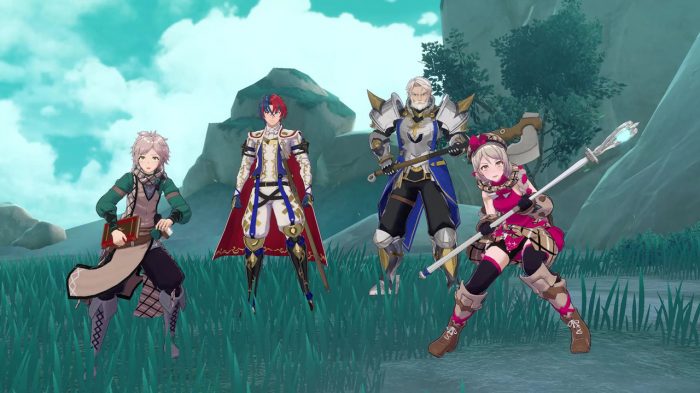
What’s cool is that you can make each one of these characters your main in battle. Sure, the toothpaste-haired Alear is the protagonist, but you can make just about anyone powerful enough on lower difficulties. Hard runs are where things start to get rough, and optimising your units and equipment becomes more crucial. I’m not sure I’ll ever have the willpower to play on Maddening.
Outside of battle, a lot of the social activities from Three Houses return, with less of a focus. You can cook meals for your soldiers, romance characters, go fishing, exercise, and even adopt animals to get rewards each time you visit them. If you enjoyed Three Houses for all the stuff in the Monastery, Engage still has some fun little time-wasters to win you over.
All in all, though, this is a game about strategy. Combat is lengthy and forces you to be mindful of mistakes, whilst Engaging adds a whole new layer to each battle. This new style of Fire Emblem is definitely working, and it’s nice to see Intelligent Systems aren’t getting complacent. The changes made to the gameplay make this another stand-out title in the series.
Fire Emblem Engage £49.99
Summary
Fire Emblem Engage delivers fan-service and new ideas in equal measure, creating a game well worth your time even if you’re not a Fire Emblem fan. Despite some story and dialogue missteps, it’s another solid entry in the long-running franchise.

